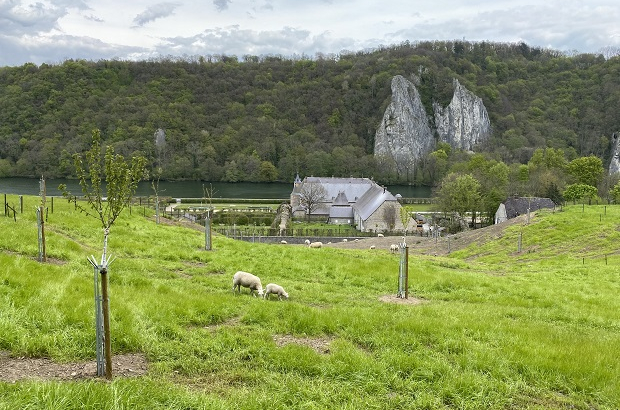- Daily & Weekly newsletters
- Buy & download The Bulletin
- Comment on our articles
Major heritage site Domaine de Freÿr undergoes unique green restoration
It’s one of most beautiful sites in Wallonia, overlooking one of the most idyllic stretches of the Meuse river, south of Dinant. Now the Domaine de Freÿr in Hastière, has been restored in a unique project combining architectural heritage, ecology and the local economy.
The castle and its adjoining land have been transformed into a sustainable estate that echoes its former life. Dating from the 14th century, the family-owned stately home resembles a mini Versailles with its terraced gardens, water features, 6km labyrinth, ancient orangery and 18th-century summer folly.
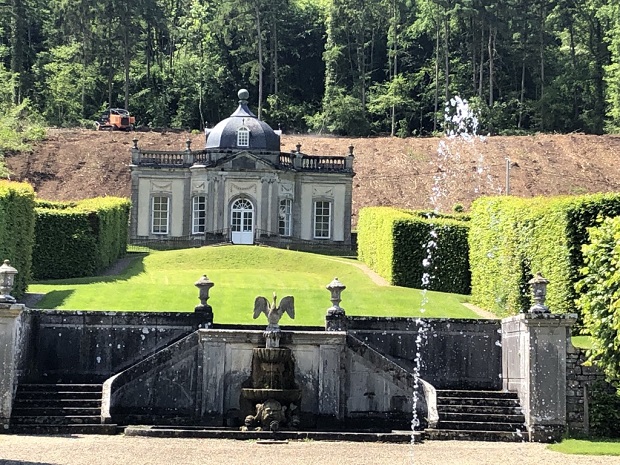
Launched in 2012 by the Domaine de Freÿr non-profit association, the project is supported by the Laubespin Lagarde Fund, managed by Belgium’s leading philanthropy institution the King Baudouin Foundation (KBF). “Consideration was given to how to ensure its sustainability while reducing its environmental footprint; these two characteristics being often difficult to reconcile, ” says KBF spokesperson Cathy Verbyst.
As part of the ‘Zero Emissions Château’ project, the 10-year restoration work improved energy performance and waste water purification as well as renovating the ancient façades and interior woodwork according to traditional artisan techniques. A new heating boiler uses woodchips from the estate’s forest.
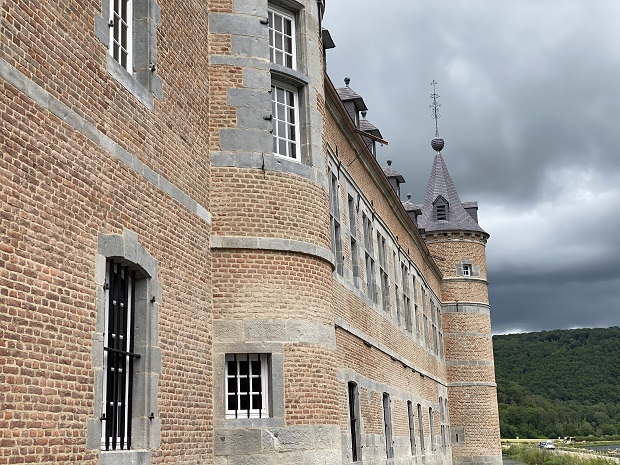
One of the many challenges to renovating the site, listed as exceptional Walloon heritage, was to limit repair work to the strict minimum to respect the original construction, explains architect Bertrand Dierckx of DG-Architects. Local companies and artisans were employed to privilege the short circuit. “We stuck to the same people throughout, which is extremely important if you wish to ensure the quality and respect for the work undertaken.”
Among the more noticeable changes, the surrounding area has been returned to meadow orchards after a study showed fruit trees once occupied the land. Rising behind the castle and its landscaped gardens, the encroaching woodland was cleared and cherry, apple, pear and plum trees planted. A local cider maker will exploit the orchard to make juice and some 20 sheep owned by a local breeder complete the bucolic scene.
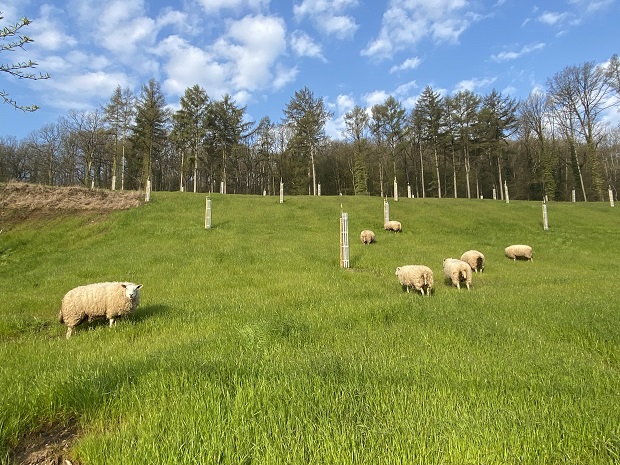
The traditional meadows also play an important ecological role, says Mathieu Halford, Natura 2000 advisor at non-profit Natagriwal. “It’s a really interesting habitat for biodiversity, an environment that is favourable to numerous animal species, such as pollinating insects, cave-dwelling birds and small mammals.” Care was taken to preserve Freÿr’s bat colony that inhabit the loft of the castle barn and hunt in the meadow orchard.
While grandiose and historically significant, the Renaissance estate is nevertheless accessible and unassuming. The low-lying structure is flanked by grey stone farm buildings, which along with the landscaped gardens, are all visible from the winding road that hugs the road between Dinant and Givet, just across the border in France.
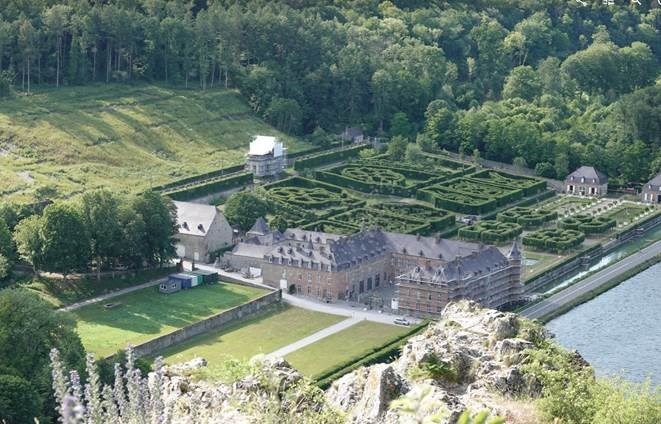
This was once a highly-sought area for second homes by Brussels gentry, but fell out of favour after the first world war. Freÿr castle remains a jewel in this quiet and unspoiled expanse of the Meuse river and one better equipped to face the future.
Domaine de Freÿr
Book online for visits
Entrance fee: €8.50 adults, children under 12 free











